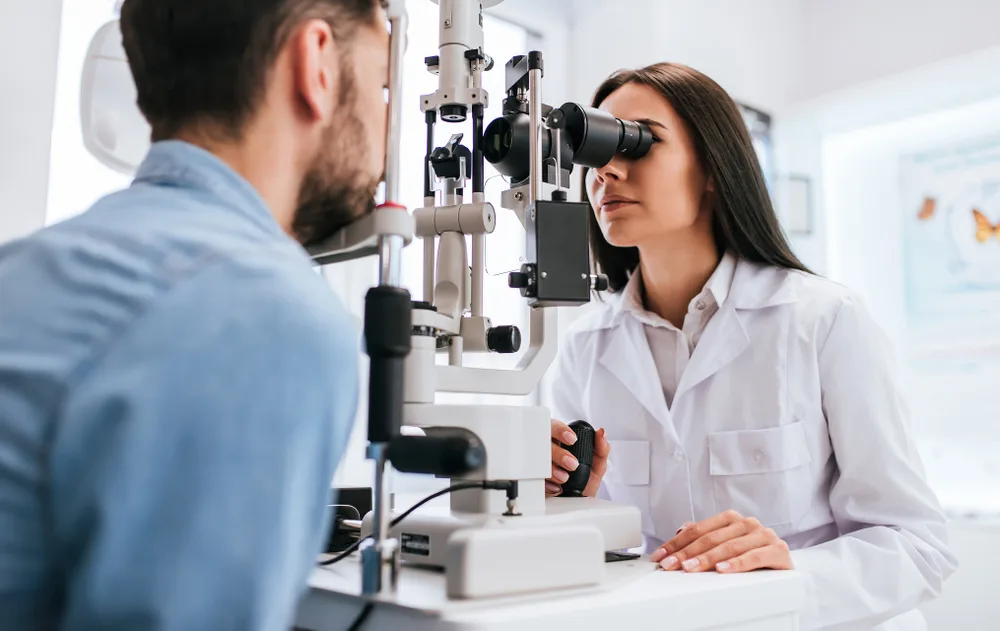What Is Low Vision?
For many adults, vision changes gradually over time. Reading may become more difficult, and driving at night may become more challenging. When these changes cannot be corrected with glasses, contacts, surgery, or medical treatment, they may be signs of low vision. Low vision refers to reduced vision that interferes with everyday activities and independence. This article explains how vision often changes with age, how low vision differs from typical age-related changes, common symptoms adults may notice, and what steps to take when these changes occur.
How Vision Often Changes with Age

As we grow older, many people experience certain normal vision changes. These do not necessarily mean disease, but they may affect daily life:
- Needing more light or brighter contrast to see clearly
- Slower adaptation when moving between light and dark areas
- Increased glare sensitivity (bright lights may seem harsher)
- Diminished contrast sensitivity (difficulty distinguishing subtle differences)
- Reduced ability to focus on close objects (presbyopia)
- Changes in color perception (especially fading of blues, greens, or subtle hues)
These changes are somewhat expected, and for many people they remain mild and manageable.
When Vision Changes Become Low Vision
Low vision is more than just “aging eyes.” It’s when these changes cross thresholds and begin to interfere with meaningful daily activities—reading, recognizing faces, navigating, handling tasks safely. Key distinctions:
- Low vision may involve both loss of sharpness (clarity) and loss of field (side vision, contrast, or depth perception).
- Unlike blindness (which is total or near-total vision loss), low vision still leaves some usable vision, though perhaps reduced or inconsistent.
- Many eye diseases (glaucoma, diabetic retinopathy, macular degeneration) contribute to low vision, but low vision itself is the functional consequence, not the disease.
Because of this, people with low vision often need adaptive methods, assistive devices, or environmental modifications to maintain independence.
Common Symptoms and Signs
These are the signs people with low vision often notice first:
- Blurry or fluctuating vision, especially as lighting conditions change
- Dark or blank spots in central or peripheral vision
- Difficulty reading, even with glasses / magnifiers
- Problems with glare, halos, or light sensitivity
- Trouble seeing faces, misplacing objects, or not seeing dropped items
- Walking cautiously, bumping into objects, or difficulty navigating in unfamiliar or low-light spaces
- Difficulty judging steps, curbs, or peripheral hazards
- Increased effort or fatigue when trying to see in dim light
Sudden changes such as a curtain over vision, sudden flashes of light, or rapid increase in floaters warrant immediate medical attention.
Kaye Olson, Coordinator of the Coping with Vision Loss Study

Kaye Olson has experienced her own personal journey through vision loss after seeing her eye doctor for what she thought would be a routine eye exam.
“I said to my husband one morning, ‘I’m calling to have my eyes examined. I think I need a prescription change.’ I had covered each of my eyes separately, and the left eye was blurred, but I wasn’t yet concerned. Initially, an ophthalmologist examined me at the clinic, but he told me that I must see a retinal specialist within 24 hours.”
“Following my eye exam with the retinal specialist, two statements propelled me into shock and disbelief: ‘You have a branch retinal vein occlusion with permanent complications, including vision loss,’ and ‘There is no known treatment for you.’ My physician compared it to a stroke on the retina.”
Learn more about ways to protect your eye health, including:
What to Do When You Notice Changes
If you or someone you care for starts to experience these signs, here’s what to do:
- Schedule a comprehensive eye exam with dilation to check retina, optic nerve, and other structures.
- Communicate symptoms clearly (when they started, how they affect daily life) to the eye care specialist.
- Request accessible explanations; ask for results in large print or audio, and plain language descriptions of findings.
- Ask about or pursue a low vision evaluation / rehabilitation if significant impairment is found. Low vision specialists can help with devices, strategies, and training. Many devices or aids will probably not be covered by your insurance plan, although it is possible your state vision rehabilitation agency may help if you are a client and meet certain criteria. If you are a Veteran, be sure to check to see if you qualify for benefits related to your vision. Please note that doctors may not refer you to vision rehabilitation services, but it is the standard of care for people who are low vision (low-vision patients include those with visual acuities less than 20/40 or scotomas, field loss, or contrast loss). If you are not referred, check the directory resources. (Low Vision – American Academy of Ophthalmology)
- Use assistive technologies and adaptations such as magnifiers, high-contrast lighting, glare filters, contrast tape, tactile cues, orientation and mobility training.
- Monitor your vision over time, watch for worsening signs, and attend regular follow-ups.
Living Well with Low Vision
Low vision can feel overwhelming at first, but it does not mean giving up independence or quality of life. By understanding the difference between normal changes in vision and signs of low vision, you can take the right steps toward care and support.
Help is available through eye care professionals, low vision specialists, and rehabilitation services. With the right tools, training, and strategies, people with low vision continue to work, study, travel, enjoy hobbies, and stay active in their communities.
If you or someone you care for is experiencing changes in vision, don’t wait—schedule an eye exam and ask about low vision services. The earlier you take action, the more options you have for protecting and making the most of your vision.
Learn More
Low Vision | National Eye Institute
Eye and Low Vision Examinations: What to Expect and Advocate For – ConnectCenter
Understanding Vision Rehabilitation – ConnectCenter